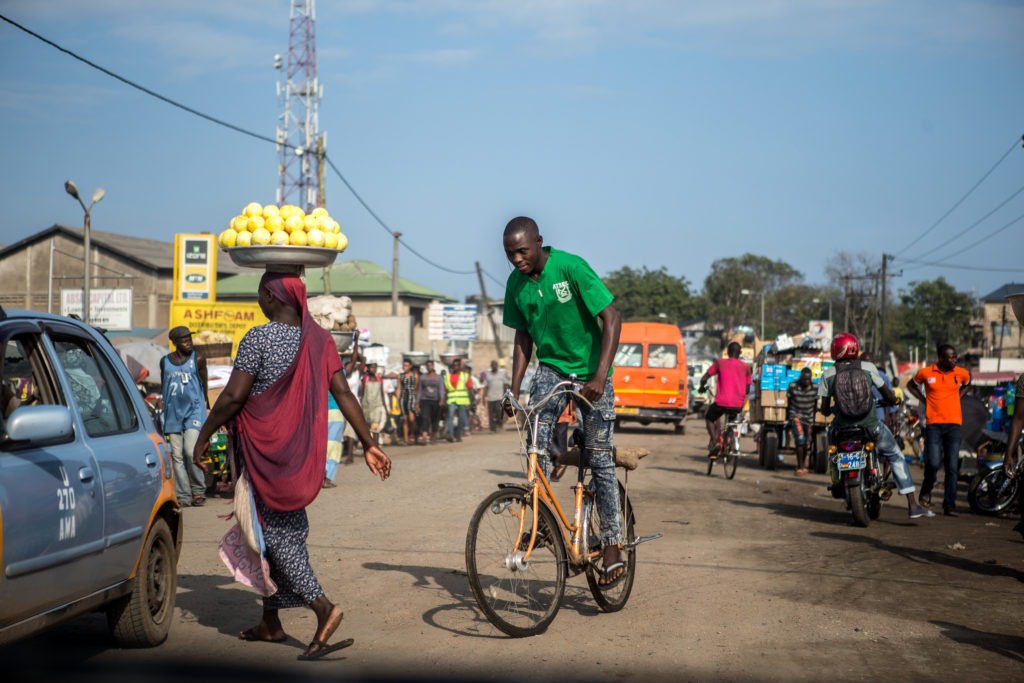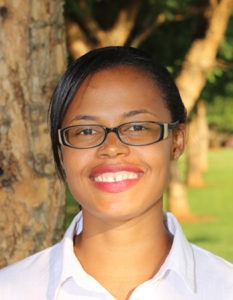17 October 2022 In Advocacy and Engagement, Africa, Blog Post, Health, Public Transport, Road Safety, Sustainable Development
Safer Roads for All in Africa
An exterior view of the Justin Kabwe School in Zambia after SARSAI programme (2017)
Credit photo by Amend
I remember the day of my undergraduate civil engineering graduation – it was a day of hope and a lot of excitement about my future career. Hope and excitement at the thought of using my acquired knowledge and skills to contribute to the development and advancement of the world around me. I had discovered I had a particular interest in transportation and traffic engineering and I started off working in the highway, transportation and traffic engineering section of an engineering consultancy.
I began with a lot of enthusiasm, but this enthusiasm started to wane the more I realised a lot of my work was done behind a desk, oftentimes focused on the needs of motorised vehicles. While we paid visits to the sites of road improvements and did basic pedestrian counts, for me, there wasn’t enough attention given to understanding the needs and challenges of the majority of road users – the children, women and men walking alongside and crossing the roads.
Africa is known to be the least motorised continent in the world and yet has the most dangerous roads with 44% of fatalities on the roads being pedestrians and cyclists. Road traffic injury is also the leading cause of death for young people aged 5 – 29 years. It was this unease with the disregard for and the fate of the most vulnerable road users which led me to start my search for a career which could make use of my civil engineering skills but with more focus on the needs of those at most risk… and that is how I found road safety NGO, Amend.

Pedestrians and cyclists exposed to high risk on Ghana’s streets
Credit photo by Edward Echwalu (2016)
I started working with Amend in 2015 as a Programme Manager for the School Area Road Safety Assessment and Improvements (SARSAI) programme. The SARSAI programme had started 3 years prior and involves identifying schools in urban Africa where children have been injured or killed on their journeys to school and the implementation of lifesaving infrastructure measures as a mitigation measure. With SARSAI, we carry out detailed assessments and consultations on the risks faced by these children. The findings from the assessments and consultations lead to putting forward recommendations for the implementation of infrastructure changes to reduce the identified road safety challenges faced by children. Finally, we oversee the implementation of these measures. A population-based study led by the US Centres for Disease Control and Prevention (the results of which were later published in the journal Injury Prevention) showed that SARSAI does indeed reduce road traffic injury amongst school children and lessens the severity of injuries that do occur.
Over the years, the SARSAI programme evolved as we refined our methodologies and began to gain further insights into the problem of road traffic injuries amongst children in Africa. It became clearer and clearer to us that the SARSAI programme is really a reactive attempt to save the lives of children and prevent injuries on our roads, so we began to think more deeply and creatively about how we could apply the principles of SARSAI before unsafe roads were built and children injured.
Thus, after a decade of experience implementing SARSAI at 54 school areas (79 schools) reaching approximately 85,000 school children across nine countries in Africa, we developed the concept for Safe Schools Africa. The Safe Schools Africa programme applies the principles of SARSAI – providing for the most vulnerable road users – across the road financing and building project cycle. Such new roads can be hundreds of kilometres long and affect children at hundreds of schools.
Safe Schools Africa was developed with support from the FIA Foundation and is currently being rolled out on a number of World Bank financed roads projects in Africa. The project teams implementing these projects – which include financing institutions, governments, engineering consultants, and contractors – do not want people, above all children, to be killed or injured on the roads they build. Making roads safe is not a controversial proposition. However, the challenge is changing the practices that allow unsafe roads to be built, and Safe Schools Africa attempts to do just that.
Safe Schools Africa brings a microscope to the road safety needs of school children in the entire road design and construction process. The process of financing, designing and building roads in Africa can take years, and the best results come when safety has been considered every step of the way. We provide very focused attention on understanding the needs of school children who use the proposed project roads, and, by extension, the needs of other vulnerable road users. Government roads authorities, their design consultants and contractors can then use this detailed information as they plan, design and construct new roads, and the Safe Schools Africa team remains the voice children throughout the process, ensuring that their safety and that of others is prioritised.
The Safe Schools Africa approach is not rocket science and the principles being applied are not new. The innovation comes from the undivided focus on the needs of one of the most vulnerable groups of road users: school children. And this focus is important and very relevant because well-intentioned road design project teams are overstretched, focussing on so many different and sometimes competing aspects of roads projects – budgets, land ownership issues, workability of road alignments, contract management, the list could go on and on – which is often why the safety of vulnerable groups slips through the cracks.
We are currently applying the Safe Schools Africa approach on projects in Mozambique, Tanzania and Zambia. And, as was intended, it is clear that through this approach we can reach more schools and improve safety for more school children in a single year than we have in over a decade with SARSAI.
Looking into the future, I am confident that just as Safe Schools Africa evolved from SARSAI, Safe Schools Africa itself will be a stepping stone to developing solutions to the even larger challenge of the need for appropriate land use planning and its effect on road safety. Hopefully, we will reach a point in Africa where roads can be planned and built for appropriate settings and appropriate use from the very beginning. I am excited for the future, which I think, is very bright for the continent and for young people as, together, we continue to take steps – safely, sustainably and equitably – in a positive direction. With next month’s COP 27 taking place in Africa, it is an excellent opportunity to raise awareness of the unique challenges around transportation on the continent and how programmes like Safe Schools Africa can address some of these issues.
1World Health Organisation Global Status Report on Road Safety, 2018
2Ibid
3Poswayo et al., ‘School Area Road Safety Assessment and Improvements (SARSAI) programme reduces road traffic injuries among children in Tanzania’, 2018

Ayikai Poswayo
Ayikai is a program director for Amend. She joined Amend Tanzania in 2015 and is currently based in Johannesburg, South Africa. Ayikai has a background in civil engineering, with a specialization in transport planning and traffic engineering. She began work with Amend as a program manager for the School Area Road Safety Assessments and Improvements (SARSAI) programme. Ayikai currently directs Amend’s infrastructure programmes across the organisation and travels to project countries. Some of her current assignments include pedestrian assessments on World Bank–funded roads in Tanzania and infrastructure improvements around schools in Botswana, Côte d’Ivoire, Ghana, Malawi, Mozambique, Namibia, Senegal, Tanzania, and Zambia.

Ayikai Poswayo
Ayikai is a program director for Amend. She joined Amend Tanzania in 2015 and is currently based in Johannesburg, South Africa. Ayikai has a background in civil engineering, with a specialization in transport planning and traffic engineering. She began work with Amend as a program manager for the School Area Road Safety Assessments and Improvements (SARSAI) programme. Ayikai currently directs Amend’s infrastructure programmes across the organisation and travels to project countries. Some of her current assignments include pedestrian assessments on World Bank–funded roads in Tanzania and infrastructure improvements around schools in Botswana, Côte d’Ivoire, Ghana, Malawi, Mozambique, Namibia, Senegal, Tanzania, and Zambia.